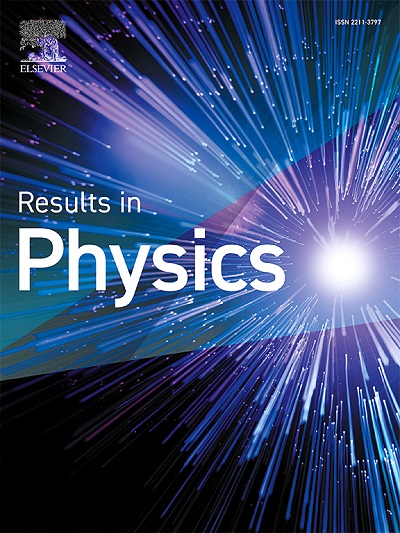Influence of a laser pulse on thermoelasticity with temperature dependence under the dual-phase-lag model using improved modified extended tanh function method
IF 4.4
2区 物理与天体物理
Q2 MATERIALS SCIENCE, MULTIDISCIPLINARY
引用次数: 0
Abstract
In this paper, the improved modified extended tanh function method (IMETFM) is introduced for analyzing the influence of laser pulse on a thermo-elastic with temperature-dependence under a dual phase lag model (DPL). Nonlinear thermo-elasticity examines cases in which a material’s response to changing thermal loads causes considerable changes in both its geometry and material properties. This field is crucial for effectively describing real-world phenomena, such as thermal stresses in large-scale structures, the behavior of materials at high temperatures, and the intricate interactions between mechanical and thermal fields. The proposed method generated a variety of exact solutions featuring distinct free parameters, including hyperbolic, rational, bright solitons, singular solitons, dark solitons, exponential, polynomial, and Jacobi elliptic solutions. Additionally, some of the results for displacement component, temperature, and stress tensor are presented through graphical illustrations.
在双相滞后模型下,使用改进的改良扩展 tanh 函数法研究激光脉冲对具有温度依赖性的热弹性的影响
本文介绍了改进的扩展 tanh 函数法(IMETFM),用于分析双相滞后模型(DPL)下激光脉冲对具有温度依赖性的热弹性体的影响。非线性热弹性研究的是材料对不断变化的热负荷的响应导致其几何形状和材料特性发生巨大变化的情况。这一领域对于有效描述现实世界中的各种现象至关重要,例如大型结构中的热应力、材料在高温下的行为以及机械和热场之间错综复杂的相互作用。所提出的方法产生了多种精确解,其自由参数各不相同,包括双曲解、有理解、亮孤子解、奇异孤子解、暗孤子解、指数解、多项式解和雅可比椭圆解。此外,还通过图解展示了位移分量、温度和应力张量的部分结果。
本文章由计算机程序翻译,如有差异,请以英文原文为准。
求助全文
约1分钟内获得全文
求助全文
来源期刊

Results in Physics
MATERIALS SCIENCE, MULTIDISCIPLINARYPHYSIC-PHYSICS, MULTIDISCIPLINARY
CiteScore
8.70
自引率
9.40%
发文量
754
审稿时长
50 days
期刊介绍:
Results in Physics is an open access journal offering authors the opportunity to publish in all fundamental and interdisciplinary areas of physics, materials science, and applied physics. Papers of a theoretical, computational, and experimental nature are all welcome. Results in Physics accepts papers that are scientifically sound, technically correct and provide valuable new knowledge to the physics community. Topics such as three-dimensional flow and magnetohydrodynamics are not within the scope of Results in Physics.
Results in Physics welcomes three types of papers:
1. Full research papers
2. Microarticles: very short papers, no longer than two pages. They may consist of a single, but well-described piece of information, such as:
- Data and/or a plot plus a description
- Description of a new method or instrumentation
- Negative results
- Concept or design study
3. Letters to the Editor: Letters discussing a recent article published in Results in Physics are welcome. These are objective, constructive, or educational critiques of papers published in Results in Physics. Accepted letters will be sent to the author of the original paper for a response. Each letter and response is published together. Letters should be received within 8 weeks of the article''s publication. They should not exceed 750 words of text and 10 references.
 求助内容:
求助内容: 应助结果提醒方式:
应助结果提醒方式:


